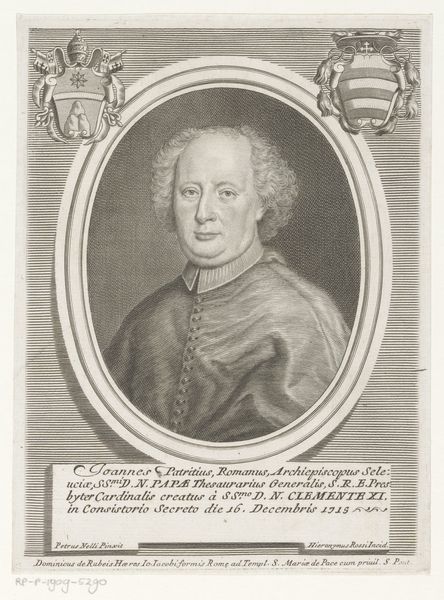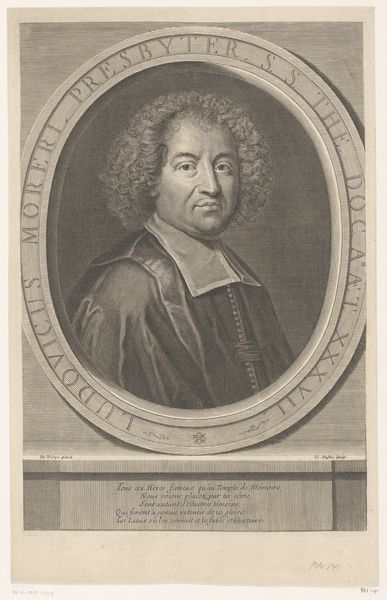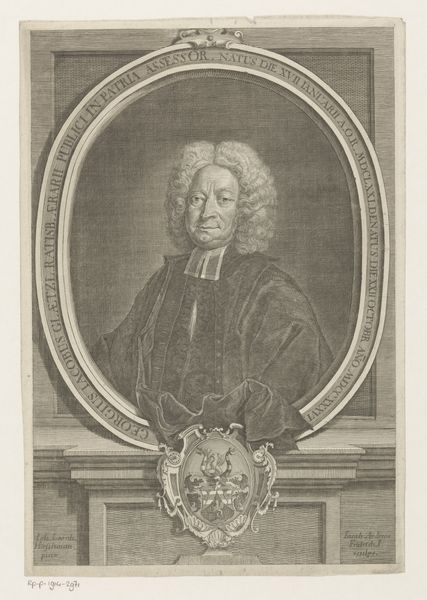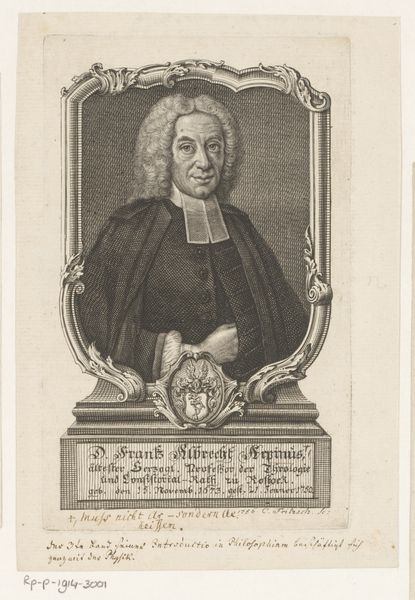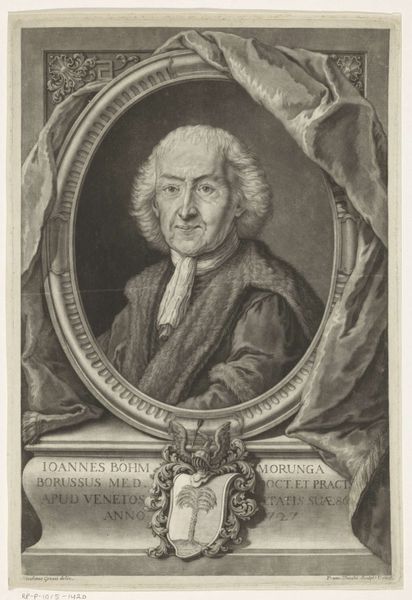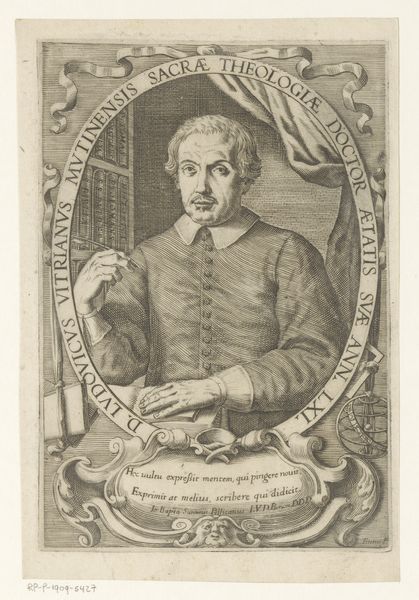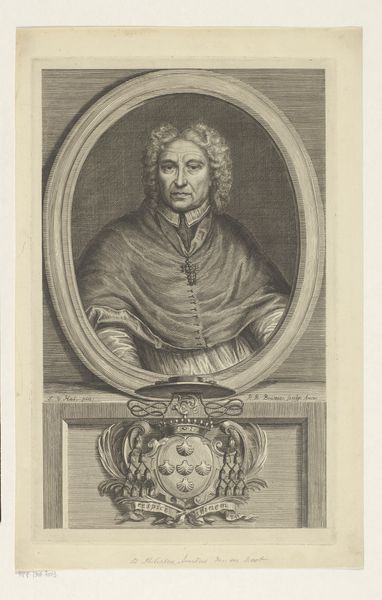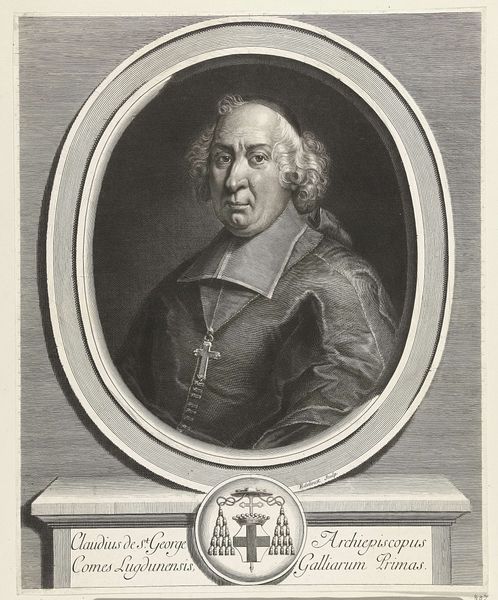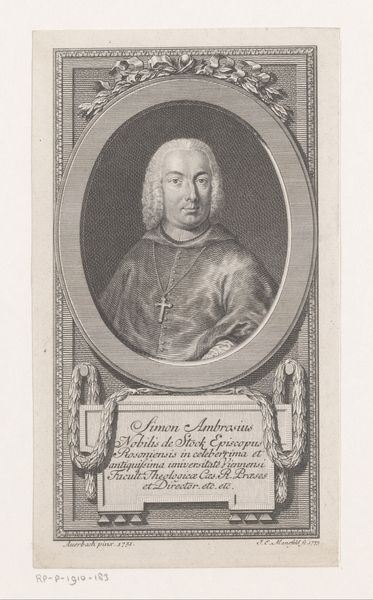
etching, engraving
#
portrait
#
baroque
#
etching
#
caricature
#
engraving
Dimensions: height 201 mm, width 133 mm
Copyright: Rijks Museum: Open Domain
Curator: Francesco Zucchi created this etching, "Portret van Joseph Motta," sometime between 1702 and 1764. Look at the sheer density of the engraving marks. Editor: It's quite arresting, isn't it? The face is so severe, almost… etched in time. I immediately think about how influential figures of power commission portraits to control their image, carefully constructing their legacy for posterity. Curator: Absolutely. The act of commissioning such a portrait reflects Motta's desire to assert his status within the social fabric of his time. We see him posed formally, surrounded by symbols of knowledge—the books—implying both learnedness and access to a particular kind of cultural capital. Etching as a medium also made these images more reproducible and widely distributed, influencing public perception. Editor: I wonder about Zucchi’s choices in depicting Motta, particularly that slightly caricatured nose! Was this intentional satire embedded within the commission, or simply an accepted mode of representation? Also, think about who would’ve been involved in making and distributing it: apprentices preparing the plates, vendors selling the final product. That labor shapes what this image means. Curator: It's fascinating to consider the interplay of workshop production—the labor that is necessary to produce engravings versus painting. Moreover, you brought up something truly intriguing. Consider also the use of perspective in Baroque portraiture, particularly its relationship to theatricality. Is there an implied stage on which Motta’s constructed persona is on display? Editor: The portrait indeed appears like a very considered fabrication of the self. What statements were the sitter trying to project? Or the engraver aiming to communicate to audiences conditioned to a symbolic vocabulary? That heavy, formalized lettering only contributes to its intended meaning, in addition to being a purely graphical element. Curator: Exactly. Examining these sorts of prints allows us access to not just an individual’s story, but also a complex nexus of power dynamics and the circulation of knowledge in a bygone era. Editor: Indeed. By studying this "Portret van Joseph Motta," we're not just seeing a face from the past; we are deciphering how images like this one functioned in their time. We glimpse not only a man but also the social theater he occupied.
Comments
No comments
Be the first to comment and join the conversation on the ultimate creative platform.



